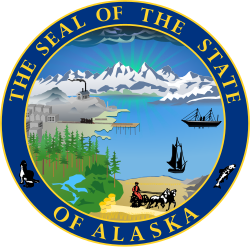| |||||||||||||||||
| |||||||||||||||||
Gravel: 50–60% 60–70% 70–80% 80–90% Lewis: 50–60% | |||||||||||||||||
| |||||||||||||||||
| Elections in Alaska |
|---|
 |
The 1974 United States Senate election in Alaska took place on November 5, 1974. Incumbent Democratic U.S. Senator Mike Gravel was re-elected to a second term in office, defeating Republican State Senator Clyde "C.R." Lewis. This is the last time that a member of the Democratic Party has won the Class 3 Senate seat in Alaska. It is also the last time a person not named Murkowski has won this seat. Since this election, Democrats have only won one more Alaska U.S. Senate race, in 2008.




